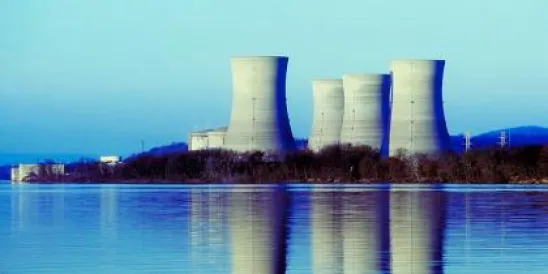Poland and the US signed the Memorandum of Understanding (MoU) on strategic civil nuclear cooperation on June 12. The MoU emphasizes the desire to establish a deeper bilateral strategic relationship aiming at energy security and meeting Poland’s clean energy needs. These aims are to be achieved by:
-
Collaboration for developing Polish infrastructure for the responsible use of nuclear energy and technologies
-
Adoption of best practices in nuclear safety, security and independent regulatory oversight
-
Exploration of cooperation across the breadth of existing and future US reactor technologies, fuel, equipment and services
-
Identifying a pathway to Poland’s development of a civil nuclear program, including addressing commercial challenges such as financing and workforce development
In a prior post (Poland’s New Energy Policy Until 2040 Goes Nuclear), we described the development of nuclear energy as one of the key elements of the new Polish Energy Policy until 2040. This plan focused on the planned 6,000-9,000MW of generation by nuclear power plants (NPPs). Although we are still waiting for the final version of this Energy Policy until 2040, with the signing of the MoU, Poland appears to be taking further steps to follow the Polish Energy Policy 2040 goals.
Analyzing the MoU, several important questions appear:
Technology and Main Equipment Vendors
In the draft Polish Energy Policy until 2040, along with public declarations by representatives of the Ministry of Energy, the policy continues to focus on NPPs with reactors of 1,000-1,500MW. The US is no longer a producer of such large capacity reactors, although the US still has significant expertise in designing and operating such NPPs. Given the current state of the market, it could be expected that such reactors would be manufactured in Asia.
To date, Poland’s policy has not focused on small modular reactors with lower power, e.g., 60MW, which are being developed in the US, where the first prototype of this type is expected to be operational in 2026. The MoU mentions “new technologies,” so a key question is whether this was a clear reference to small modular reactors, and whether Poland’s officials welcome such an initiative from the US.
Financing
The MoU mentions the challenge of commercialization and financing of any project. This is with good reason, as Poland does not have enough capacity to finance the large NPP. As an example, the tender to construct the coal-fired power plant in Ostrołęka of 1,000MW was awarded in 2017, but until now the owners have not secured all the financing for the project. This casts into doubt the ability to finance the large NPP solely from Polish sources.
The issue is how to combine potential external financing sources with the evident desire of the Polish government to retain control over the project. Obviously, solutions can be found, but they will require extensive negotiation, given the risks involved in any new-build NPP.
Our previous post regarding the implementation of the NPP project showed the timetable proposed by the government. That timetable posited 2018 as the year to select a financing model, a year that has come and gone. While the MoU contains no binding obligations on the signatories, we hope that it creates opportunities for further discussions that will enable the development of a financing model in 2020.
Tender Procedures
When Poland recommenced efforts in 2011 to construct the NPP, it adopted a law specifically regulating the preparation and implementation of the investment process. That law provides that the public procurement law, with minor modifications, shall apply to contracts awarded in connection with the preparation, implementation and financing of investments regarding the construction of NPPs. As the State Treasury controls the heavy power sector in Poland, including the Special Purpose Vehicle dedicated to construct the first Polish NPP, the application of public procurement procedures to tenders for the project are understandable.
Interestingly, however, the law does not distinguish alternative projects that may be initiated by privately controlled project companies – as the law reads, these also are subject to the same public procurement requirements. Although it is still too early to expect privately controlled initiatives in the sector, the public procurement requirement means that structuring a tender will be crucial either for large NPPs or for any projects implementing alternative technical solutions. The European Commission can be expected to carefully review the transparency of the selection process. Entities from the US, on the basis of the US-Poland bilateral investment treaty, have a right to most favored nation treatment in any tender.
Given these issues, even with the impetus provided by the MoU, we expect that any proceedings regarding tenders for the large NPPs or any alternatives will last several years.




 />i
/>i
